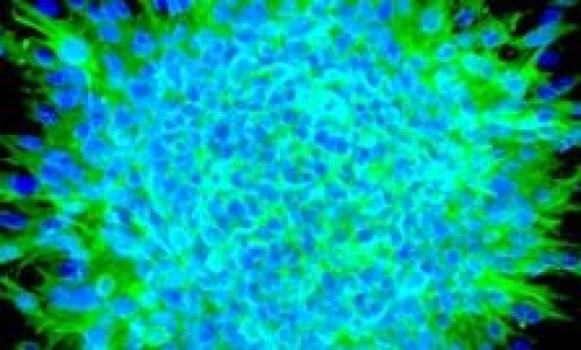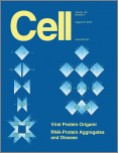
显微镜下的干细胞。
(Credit: Image courtesy of King’s College London)
2013年8月18日 讯 /生物谷BIOON/ –近日,来自伦敦国王学院的研究者通过研究首次揭示了位于人类心脏中的一系列干细胞的天然再生能力,这项研究表明,这些干细胞或许可以帮助那些因为心脏病发作而导致心衰患者的机体修复以及肌肉组织的再生,相关研究成果刊登于国际杂志Cell上。
如果没有干细胞,心脏就不能进行损伤后修复;如果心肌干细胞被用于进行心脏修复,就会使得个体心脏重新恢复功能。如果可以把心肌干细胞注射入个体体中,那么其就会找到自己的“家”并且完成修复心脏的工作,这项研究可以帮助研究者开发一种较少侵入的心衰治疗疗法。
研究者通过从心衰啮齿类动物的心脏中移出了心肌干细胞(sCSCs)从而建立其了其重要的角色,这位产出其修复心脏的再生能力提供了一定的基础。研究者Georgina Ellison表示,在一个健康的心脏中,心肌干细胞的量对于修复心脏肌肉组织来说非常充足,然而,在损伤的心脏中,这些干细胞却不能进行增殖来产生新的肌肉组织,这种情况下,就需要移除讯上的心肌干细胞或者通过在实验室条件下增加新的心肌干细胞的数量来使其发挥再生的作用。
理解心肌干细胞的角色及潜力对于开发一系列抑制心衰或者治疗心衰的疗法非常重要;心肌干细胞在自然状态下可以回到心脏,因为心脏是它的“家”,当前研究者的尝试包括通过心脏肌肉壁或者冠状血管来注射心肌干细胞从而发挥修复作用。
心肌干细胞的这种“返巢”机制或许可以帮助研究者开发一种微创疗法来将心肌干细胞通过静脉注射入患者机体中发挥心脏修复作用。研究者Nadal-Ginard最后补充道,尽管目前只处于早期研究阶段,但是这项研究发现具有非常重要的意义,下一步将进行在2014年年初进行临床试验,到时候就可以检测心肌干细胞在预防及治疗患者心衰上的作用效果了。(生物谷Bioon.com)

doi:10.1016/j.cell.2013.07.039
PMC:
PMID:
Adult c-kitpos Cardiac Stem Cells Are Necessary and Sufficient for Functional Cardiac Regeneration and Repair
Georgina M. Ellison, Carla Vicinanza, Andrew J. Smith, Iolanda Aquila, Angelo Leone, Cheryl D. Waring, Beverley J. Henning, Giuliano Giuseppe Stirparo, Roberto Papait, Marzia Scarfò, Valter Agosti, Giuseppe Viglietto, Gianluigi Condorelli, Ciro Indolfi, Sergio Ottolenghi, Daniele Torella, Bernardo Nadal-Ginard
The epidemic of heart failure has stimulated interest in understanding cardiac regeneration. Evidence has been reported supporting regeneration via transplantation of multiple cell types, as well as replication of postmitotic cardiomyocytes. In addition, the adult myocardium harbors endogenous c-kitpos cardiac stem cells (eCSCs), whose relevance for regeneration is controversial. Here, using different rodent models of diffuse myocardial damage causing acute heart failure, we show that eCSCs restore cardiac function by regenerating lost cardiomyocytes. Ablation of the eCSC abolishes regeneration and functional recovery. The regenerative process is completely restored by replacing the ablated eCSCs with the progeny of one eCSC. eCSCs recovered from the host and recloned retain their regenerative potential in vivo and in vitro. After regeneration, selective suicide of these exogenous CSCs and their progeny abolishes regeneration, severely impairing ventricular performance. These data show that c-kitpos eCSCs are necessary and sufficient for the regeneration and repair of myocardial damage.

